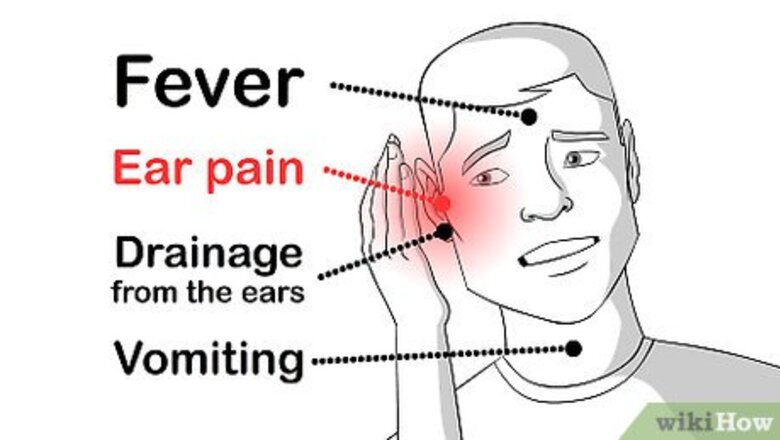
views
Cleaning at Home
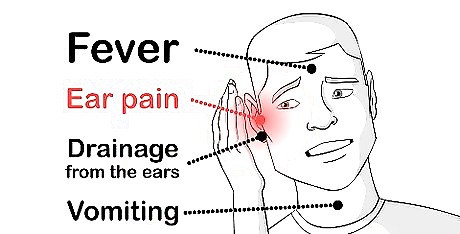
Be sure you don't have an ear infection or a perforated eardrum. Cleaning your ears under these circumstances can be extremely dangerous, so do not use this method if you even suspect a problem. Instead, schedule a medical appointment immediately. Symptoms of an ear infection include: Fever. Vomiting or diarrhea. Green or yellow drainage from the ears. Persistent and severe ear pain.
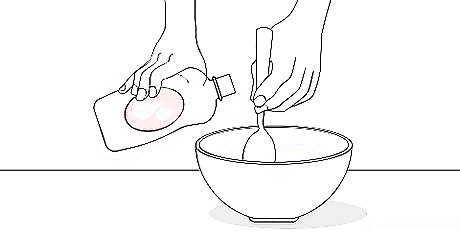
Make your own wax-softening solution. You can purchase a carbamide peroxide cleaning solution at your local pharmacy, or you can make your own. Combine warm water with one of the following and mix well: A teaspoon or two of 3-4% hydrogen peroxide solution A teaspoon or two of mineral oil A teaspoon or two of glycerin
Prepare an applicator (optional). You can simply pour the solution into your ear from the bowl if you don't have an applicator on-hand. However, if you do have one around, it can make the process a little tidier and easier. Use a large plastic syringe with a plastic tip, a rubber bulb syringe, or even an eyedropper. Fill the applicator with the solution. Draw up enough so that the applicator is more than halfway full.
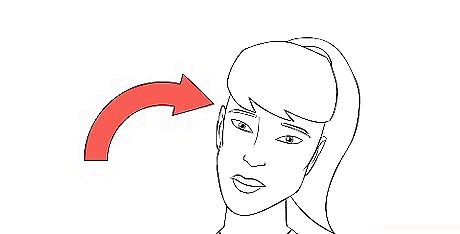
Tilt your head to the side. The cleaning process will work better if your ear canal is as close to vertical as possible. Allow the ear you're cleaning to face upward. Lie down on your side, if you can. Just be sure to put some towels under your head to catch any excess solution.
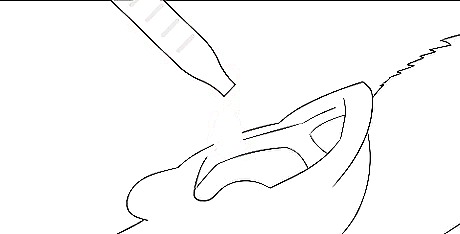
Put the solution slowly into your ear. Make sure the solution is room-temperature. Then, pour it from the bowl into your ear, or position the end of the applicator a few inches above (not in) the ear canal and squeeze 5-10 drops into each ear. If you used hydrogen peroxide, you may hear a fizzing or popping sound. Don't worry, this is totally normal! If you can, you might want to ask another person to do this step for you. It'll be easier for him or her to make sure the solution is actually getting into your ear.
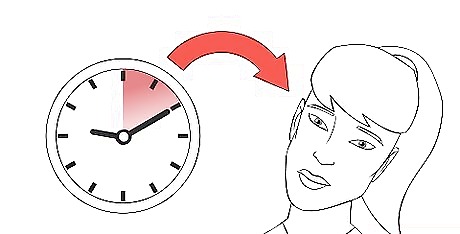
Allow the solution to work for a few minutes. Keep your head tilted to the side and give the solution some time to break up the earwax. Five to 10 minutes should be sufficient. If you used hydrogen peroxide, allow the solution to work until you no longer hear fizzing or popping.

Drain the fluid. Hold an empty bowl under your ear, or put a cotton ball up to the outside of your ear. Tilt your head slowly, and allow the liquid to drain out. Be careful that you don't push the cotton swab into your ear — simply hold it lightly against the outside of the ear, so it's positioned to catch the fluid. You can use this solution up to 2 times a day for up to 4 days to soften the wax prior to removal.

Flush your ears. After the wax has softened, use a rubber bulb syringe to flush out loosened earwax. Gently squirt lukewarm water (at body temperature—98.6°F (37°C) into your ear canal. For very stubborn wax or for people with very small ear canals, an enema bottle filled with clean, warm water may work better than a bulb syringe. Pull on the earlobe out and up to open up the ear canal. Do this over the sink, tub, or other container: it's a messy operation, and you may flush chunks of earwax out.
Irrigate your ears again. With excessive buildup, it may be necessary to repeat the process twice a day for no more than four to five days. Don't drain your ears too often. Doing so could damage your eardrum and the sensitive skin in your ear canal.
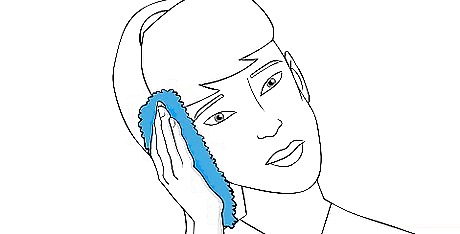
Dry your ears. When you're done flushing, place a towel over your ear, and tilt your head to the other side to drain the water. Gently pat the outside of your ear with a towel, then repeat the process on the other ear. If this process does not completely remove your ear way, follow up with a healthcare professional within 3-5 days for irrigation.
Seeking Medical Remedies
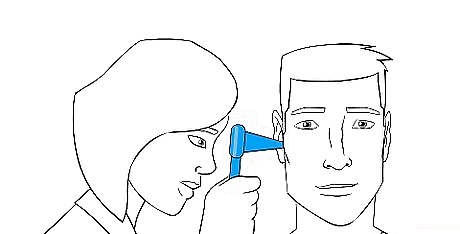
Visit your doctor. If you can't clear the blockage on your own, make an appointment with a medical professional. He or she can tell you in a couple seconds if you have a blockage, and perform a quick procedure to flush your ears. You might be experiencing the following symptoms: Persistent earaches. Muffled hearing. A feeling of fullness in your ear.
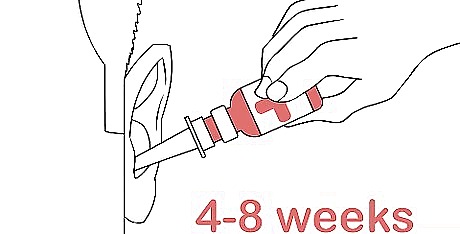
Use an over-the-counter solution. To manage long-term earwax problems, your doctor may suggest using over-the-counter solutions containing carbamide peroxide every four to eight weeks. Brands using carbamide peroxide include Murine, Debrox, Auro, Mack's, and GoodSense. Your doctor may also suggest prescription ear drops containing trolamine polypeptide oleate, or Cerumenex.

Relax. The doctor may flush your ears with a water pick or bulb-type syringe to clean out smaller blockages (lavage), or may remove larger blockages in part with an instrument called a curette or by using suction. It doesn't hurt at all, and in just a few minutes, your ears will be safely and thoroughly cleaned—and your hearing will be startlingly better.

See a specialist, if necessary. Talk to your doctor or an ear, nose and throat specialist (ENT) if you have frequent and troublesome buildups of earwax.


















Comments
0 comment